Everything You Need to Know About Dual SIM Phones for Travel
We may earn a commission from purchases you make after clicking links on this site. Learn more.So, what is a dual SIM phone?
In essence, it’s exactly what the name suggests: a phone that can use two different SIMs. A SIM, or Subscriber Identity Module, is (typically) a small, removable plastic card with metal contacts that fits into a slot in the side of the phone.
Its basic purpose is to help identify a device on a cellular network. If the SIM is authorized to connect to the network, you’ll get service. If it isn’t, you won’t.
Most phones sold in the United States only have a single SIM slot. Dual SIM phones are far more common elsewhere in the world, however, and many manufacturers offer different versions of their phones because of this.
Buy the US model of the otherwise-impressive Samsung Galaxy A53, for example, and it’ll have one SIM slot. Buy the international equivalent, and it’ll have two.
Technically, things don’t end with just two SIMs. Triple or even quadruple SIM phones do exist, but they’re very rare, and typically only available in developing markets like India. They offer little extra for the vast majority of travelers, and there’s no particular reason to try to hunt one down.
In recent years, phones with eSIMs have also shown up. In most cases, these devices have one physical SIM card slot and one embedded SIM (hence: eSIM) that uses a downloadable profile instead of a plastic card to connect you to a cellular network.
All recent iPhones support eSIM, along with several Android devices. Just to confuse things, Apple decided to remove the physical SIM slot entirely from the US model of the iPhone 14 and 15, replacing it with dual eSIM support.
Given that few carriers offer prepaid eSIM service to travelers, this isn’t great for those heading overseas, but fortunately travel eSIM companies have stepped in to offer service, often at similar or even cheaper prices.
I talk much more about eSIMs, including what options you have when traveling internationally, below.
Why Use a Dual SIM Phone?
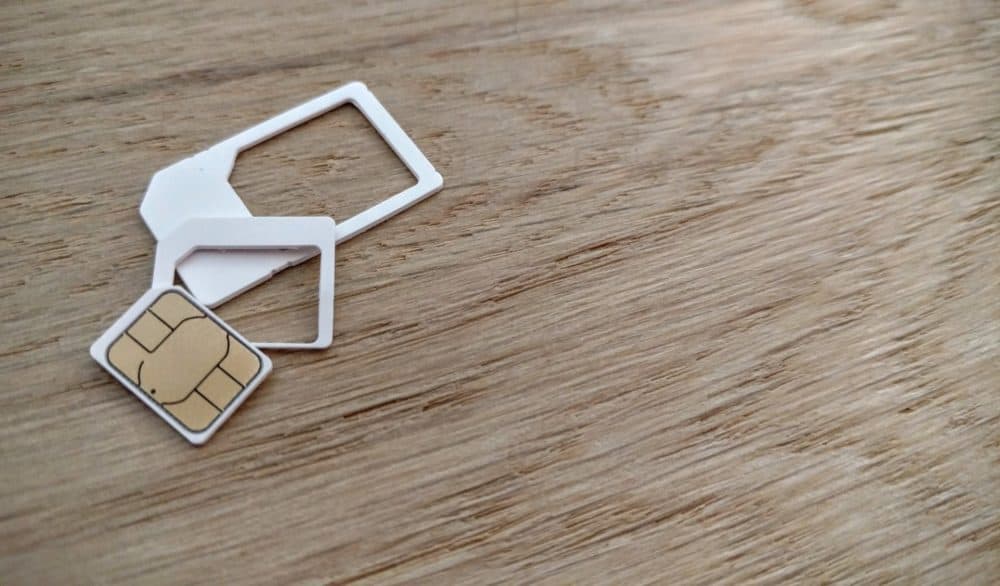
People tend to use dual SIM phones for two main reasons in daily life. In countries where calls are typically free between devices on the same network, customers often have SIM cards from two different companies and switch between them depending on who they’re calling.
Likewise, people who don’t want to carry a separate phone for work and personal use will often end up with a dual SIM model that lets them combine both numbers in a single device.
There’s some impact on battery life when using two SIMs, but it’s fairly minimal.
How Is a Dual SIM Phone Useful for Travel?
Dual SIM phones are very useful for international travelers, since they can provide the best of both worlds when it comes to staying connected.
You can buy and use a prepaid SIM card from whatever country you’re traveling in to get cheap local calls, texts, and data, while still keeping your usual number accessible. Equally, you can drop an international SIM card into one of the slots, and retain your home SIM in the other.
Almost all dual SIM phones let you set a default SIM for calls, texts, and data. You can often also turn data roaming on or off individually, and disable one or both SIMs as needed.
This approach gets around a problem faced by many international travelers: how to avoid paying high roaming fees to use your phone abroad, while still being contactable by family, friends, and institutions like banks that want to send authentication codes to your usual number.
As long as you have roaming enabled with your home SIM, you’ll still receive calls and texts to it, even with the other SIM set as the default.
Not All Dual SIM Phones Are the Same

Just because two phones have dual SIM capability doesn’t mean they both work exactly the same way. There are a few technical differences to be aware of.
Dual Active vs Dual Standby
In the past, one of the biggest differences between dual SIM devices was whether they were dual standby (DSDS) or dual active (DSDA). As the names suggest, dual-active devices can both be active on a call or using data at the same time. Dual-standby devices will “listen” with both SIMs, but only one can be active at once.
This mattered far more with older GSM voice and data networks, since using one SIM for calls, texts, or 2G data would prevent the other from receiving a call. LTE networks don’t have the same limitations, and most phone makers now don’t bother with the extra hardware required for dual-active support.
These days, the main thing you need to remember with DSDS devices is that unless your carrier is using VoLTE (Voice over LTE), the other number will go to voicemail whenever you’re on a call.
What About eSIMs?
Embedded SIMs (eSIMs) have been available in some Android devices for the last few years, but it was Apple adding it to recent iPhones that really popularized the technology.
Rather than using a physical, removable SIM card, eSIMs are built into the phone and configured via software. Most (but not all) phones with eSIM also include a separate physical SIM slot; those that don’t tend to let you use two eSIMs at once.
The iPhone XS and iPhone XR models were the first dual SIM iPhones that Apple made. In most of the world, these and subsequent models have one physical SIM slot and one eSIM.
Versions sold in Hong Kong, Macau, and China take two physical SIMs instead, while the North American version of the iPhone 14 and 15 has eliminated the physical SIM slot entirely.
While eSIMs are certainly convenient in some situations, they don’t yet provide the same flexibility as physical slots. As mentioned, carriers around the world have been slow to support eSIM, with few other than T-Mobile in the US, the odd European provider, and international SIM providers like Airalo currently offering prepaid service.
I’ve talked a lot more in the past about eSIMs for travel and the best way to use them, and wrote up an Airalo review after using it on international trips. It’s my current recommendation for those looking to use an eSIM while traveling overseas, but it’s always worth comparing eSIM prices: other companies are sometimes cheaper.
Don’t Forget About MicroSD Cards
Many dual SIM Android phones also include microSD card support, letting you add additional storage space as needed. If that’s something you intend to use, it’s worth checking the details of exactly how it’s done on the device you’re buying.
Some dual SIM phones have a separate microSD slot, so adding extra storage won’t affect your ability to use a pair of SIM cards. Other models, however, save money and space by combining the microSD card reader with one of the SIM card slots.
In that case, you can use either two nano SIMs, or one SIM and one microSD card, but not all three cards at once.
What’s the Best Dual SIM Phone?
The best dual SIM phone, for travel or any other purpose, is likely to depend as much on where in the world you’re buying it as anything else. As I mentioned earlier, relatively few phones sold in the United States have two physical SIM slots. You’ve got a few more options if you’re happy to use an eSIM, but it’s still a limited range.
Elsewhere in the world, it’s a different story. Not only are there far more dual SIM phones that aren’t even sold in the US, as mentioned earlier there are international variants of several popular models that have two SIM slots instead of one.
It’s often possible to buy these international models from the US Amazon store and elsewhere, but they typically don’t include a manufacturer warranty, and you may not be able to activate them on your preferred network. If they fail after the return period, you’re on your own.
With the switch to 5G, US carriers have become much pickier about the devices they’ll activate on their network. Verizon and AT&T are now very specific about which devices are allowed, with no overseas dual-SIM phones on the list at time of writing.
T-Mobile and its resellers are less restrictive: as long as the device supports VoLTE (almost any decent phone released in the last few years will), it should be ok.
Basically, don’t plan to buy an international or otherwise “unofficial” dual-SIM phone and use it on the AT&T or Verizon network going forward. This applies to those traveling to the US as well: you’ll need to choose a different carrier if you buy a local SIM card there.
Best Dual SIM Phones With Two Physical SIM Slots
OnePlus used to be the obvious recommendation for both US and international buyers, since it was one of the few companies offering high-end dual SIM phones worldwide. I’ve reviewed the OnePlus 6 and 6T in the past, and subsequent models continued where they left off.
Sadly, due to pressure from US carriers, OnePlus dropped the dual SIM support from the US versions of most of its phones after 2020’s 8T model. The international versions don’t have the same limitation, but as mentioned, you’re more likely to run into issues with warranty and activation.
As a result, I don’t currently have a recommendation for a high-quality phone with two physical SIM slots in the US. These days, you’ll be better off with something that supports one physical SIM and one eSIM, like the Google Pixel 8.
Outside the US, it’s much easier. While you may be able to buy the Pixel 8 there as well, you have many other alternatives as well.
In terms of widely-available high-end devices, the Samsung Galaxy range is a good place to start: many (but not all) recent international models have two SIM slots. One Plus’s flagship international versions all have them as well, including the OnePlus 11 with two SIM slots and an eSIM.
In the midrange, I’d most likely go for the OnePlus Nord 3 5G. It’s not sold in the US, but is available in several other countries, and has almost all of the features I like to see in a phone costing under 500€/£500.
There aren’t any great budget dual SIM options for travel: they all make too many compromises on things that matter like camera quality and performance. Rather than going for something mediocre, I’d really suggest saving up for a mid-range option.
Finally, if you plan on traveling internationally with your phone, you need to make sure it’ll work wherever you’re going. Cellular standards and frequencies vary widely around the world, and no phone supports all possible variations. Plug the details, including the exact model number, into this site to confirm.
Best Dual SIM Phones With eSIM
Once you start including phones that have a physical SIM slot and an eSIM, your options open up a little more, especially for US buyers. Most of Apple’s recent models fall into this category, so anything from the iPhone SE (2020) to the iPhone 13 are all good dual-SIM choices.
As mentioned earlier, though, the elimination of the physical SIM in the US model of the iPhone 14 and 15 isn’t great news for international travelers. If you don’t plan to travel overseas or are happy to buy service from companies like Airalo when you do, you’ll be fine. Otherwise, just be aware of the limitations of not having that SIM slot.
In terms of price, however, the best dual SIM phone that uses an eSIM right now has to be the Google Pixel 7a. It’s the phone I currently travel with, and offers remarkable value given the high-end camera, regular software updates, decent battery life, and more.
I’d still have bought it even if it only had a single SIM. With two, it was a no-brainer. The only problem with it is a logistical one: Google only sells the Pixel 6a in 17 countries and territories, including the US, Canada, UK, Australia, Japan, and a few places in Europe.
If you live somewhere else, I’d suggest checking out the Samsung Galaxy S23 FE instead. It’s a similar price, at least during one of its regular sales, and is a great midrange option with few compromises.
What Other Dual SIM Devices Are There?
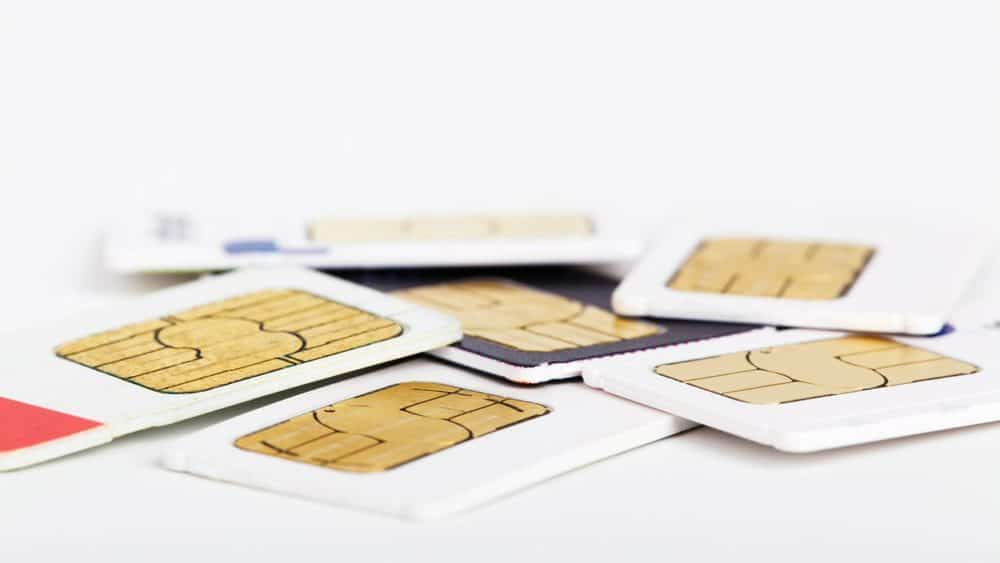
While multiple SIM slots are most often seen in smartphones, that’s not the only place you’ll find them. A few companies have come out with dual SIM mobile hotspots, and it’s still possible to find Android and iPhone dual SIM adapters if you look hard enough.
Dual SIM Mobile Hotspots
While the vast majority of portable hotspots have a single SIM slot, there are a few that buck the trend. The GlocalMe G4, one of my top mobile hotspot picks, actually has three SIMs: a pair of slots to put physical SIM cards in, along with an eSIM that provides surprisingly affordable roaming data packages.
The advantage of that approach is being able to use the roaming data as soon as you arrive in a new country, then switching to a local SIM whenever you get around to buying one. Only one SIM, physical or embedded, can be active at once, but that’s not an issue with data-only devices like these.
Hotspots like these are only a partial communication solution, since you’re still restricted to the SIM card in your phone for calls and texts. Given the focus on data for most travelers, however, that limitation often doesn’t matter much at all.
Dual SIM Adapters
A few years ago, dual SIM adapters were quite common for both Apple and Android devices. They come in two main types: a ribbon cable that hangs out of the phone’s SIM tray, and a Bluetooth adapter with a pair of SIM slots.
For a long time adapters like these were really the only way of getting a dual SIM iPhone in particular, but both types have their flaws. The ribbon cable approach is ugly, cumbersome, and quite delicate. The Bluetooth adapters are typically quite expensive, don’t have great battery life, and mean carrying a second device.
Unless you need calls and texts on both SIM cards, you’ll usually find an unlocked portable hotspot is a better choice than any of the dual SIM adapters. That probably helps explain why the adapters have dropped in popularity in recent years.
Get regular updates from the world of travel tech and remote work
News, reviews, recommendations and more, from here and around the web
Wrapup
Dual SIM phones come in many different variations. They’re easily available in some parts of the world, and hard to find in others. Some let you use two physical SIM cards, while others use an eSIM instead. Using a second SIM will stop you adding extra storage with some dual SIM phones, but not others.
Whatever type you go for, however, you’ll find a dual SIM phone useful overseas. Being able to drop in a prepaid SIM to get cheap local calls, texts, and data while still having access to your home number is valuable on the road. You’ll save money and time, with no extra effort.
If you’ve got the option where you live, it’s well worth making your next phone a dual SIM model.
Got any questions about dual SIM phones? Drop them in the comments!
Images via andrewbecks (SIM card and plastic holders), PublicDomainPictures (many SIM cards), Dusan Petkovic (man buying SIM card in shop), De Repente (man removing SIM card from phone)

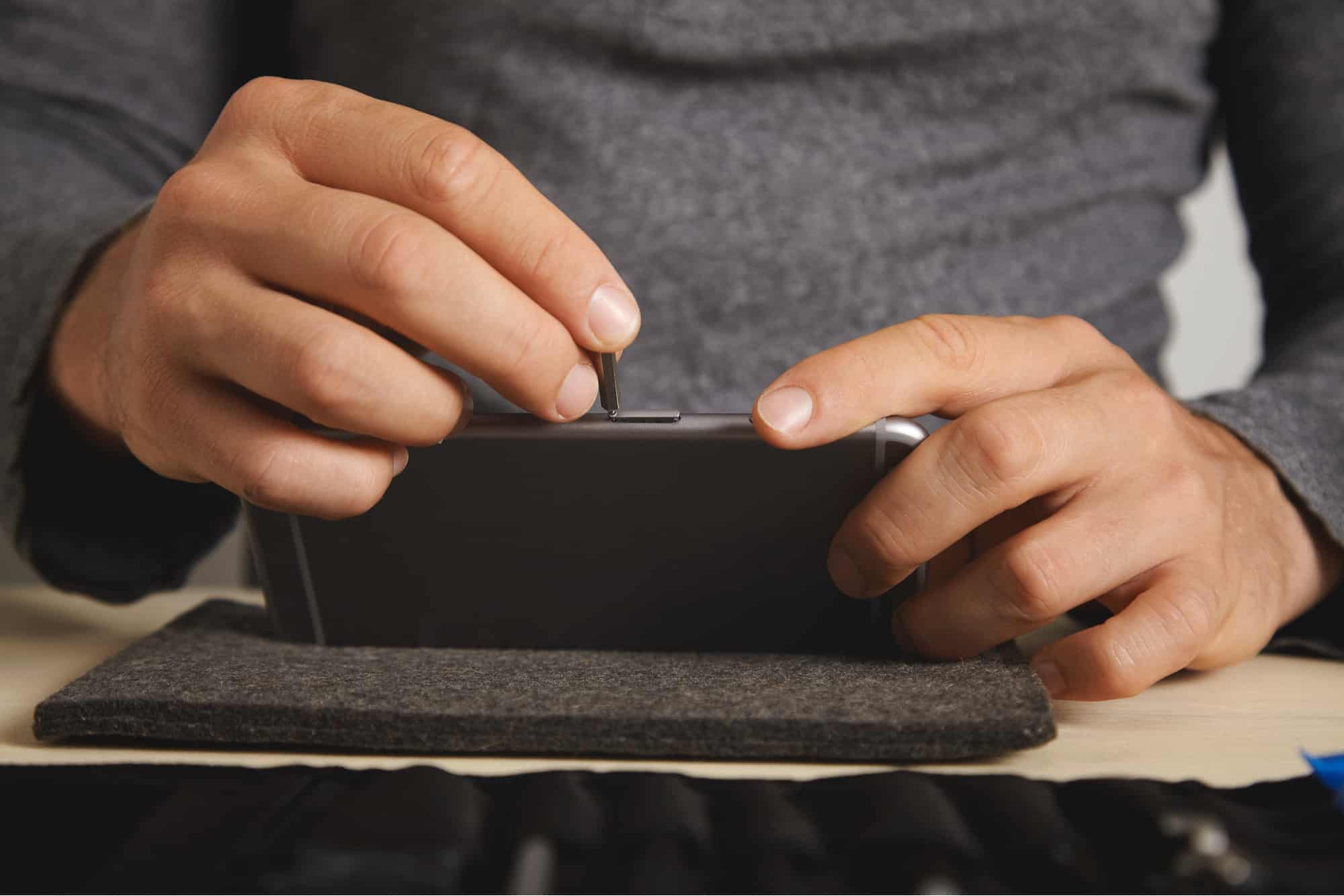
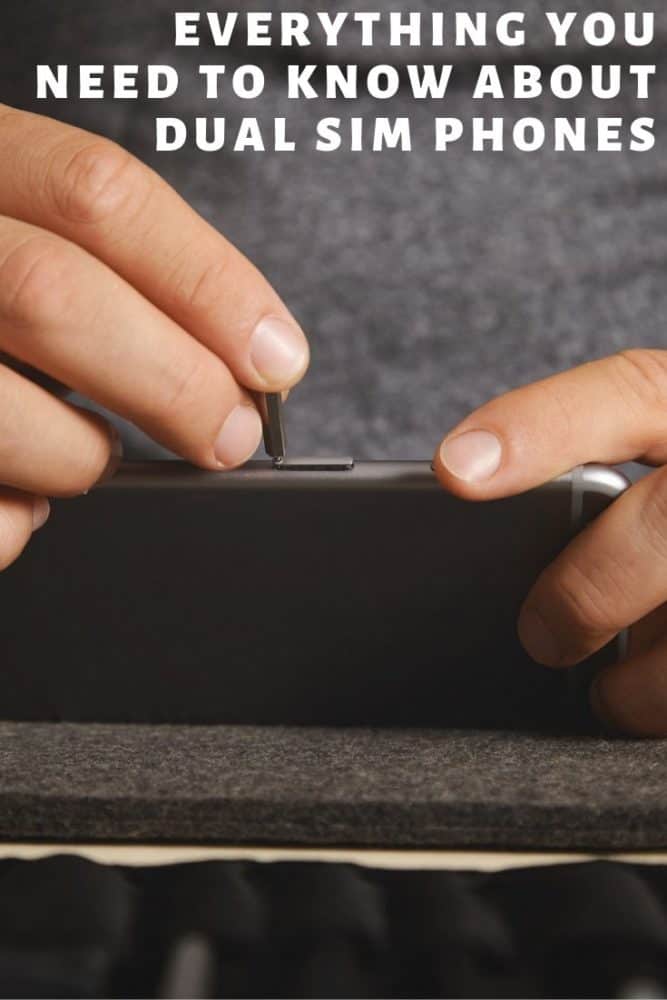
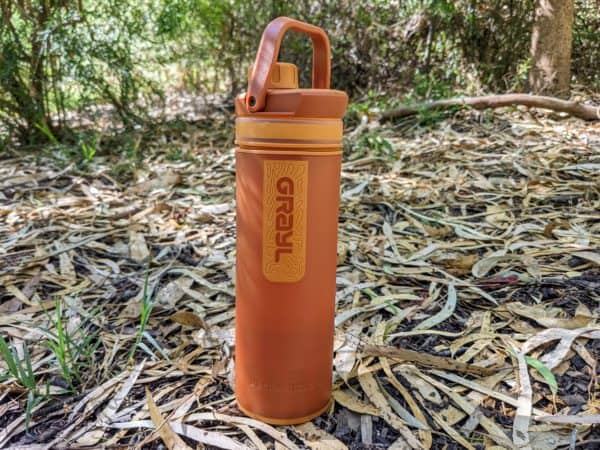




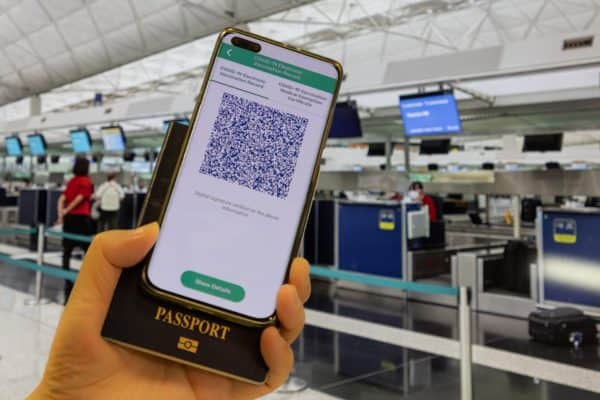
My wife and I will be taking a trip to Paris, France for our wedding anniversary in November 2019. I would like to use UBER while I am in Paris, but my phone is with Total Wireless and will not work outisde of the US. I am happy to purchase the Motorola Moto G (International) you recommend, but I will need to put the UBER app on the phone. How would I go about doing this so that I can use in Paris. I plan on getting a $49 SIM package from Orange prior to leaving and using in France. Please help. Thanks.
Stanley
Do you use Uber currently?
Surprised you haven’t mentioned the Samsung Galaxy S10 hybrid, although this may be because it seems you’re getting more US centred than in the past. FYI, this has the choice of using two SIMs or a micro-SD card in the second slot (not really necessary as it has a 512 GB memory).
Hi Tony,
Yep, as long as you’re happy with the pricing and are buying outside the US, the Galaxy S10 is a good dual-SIM option.
This article was written largely with a US audience in mind, since there are many more dual-SIM phones available in Europe, Asia, and elsewhere, and readers there are typically more familiar with the concept already.
It’d be nice if US carriers didn’t have as much influence as they do on the phone market there, and more models came with two SIM options there!
Having read the above article I’m convinced you are the right guy who could help me. I’m using a dual SIM card OPPO phone both provide roaming service.When I go oversea do I leave both cards on or disable one? Or, can I set one for calling and the other for roaming?
Patrick Goh
Singapore
That would depend on which provider is giving you the best data roaming rates, and whether you need to receive calls/texts on both numbers, just one of them, or neither of them. You should be able to choose whether you want roaming enabled for both SIMs, and whether you want data roaming enabled or not.
So yes, you could turn off data roaming for one of them (so it’s only used for calls and texts), and turn it on for the other one.
If you’d rather, you can a local SIM card in one of the slots and use it for data and local calls/texts, and have one of your home SIM cards in the other slot and only use it for receiving calls/texts from home. That’s what I do, but which option makes sense for you really depends on the home carrier(s) you’re using.
I have an iPhone XS on AT&T and I had them move to the eSim. When I travel now and buy a Sim in the country I am in will I get calls on both numbers? I always get a local Sim so I have a local number for making restaurant bookings and UBER. I have been concerned however if I need to do banking or something back home will I still get the SMS code? It sounds from your article that I will.
If both Sims are active it sounds like I can set the local one for data and the home one with data off. Is that correct?
Thanks
Yes, as long as roaming is enabled for your AT&T account, you should get calls and texts to both your home number and the local SIM. You’ll also be able to set the local SIM as the default for data, and turn data off for the roaming SIM.
Another option for saving costs while travelling is VOwifi aka WiFi calling. This allows you to use any WiFi connection to make and receive calls via your home network.
What I would like to know is if WiFi type calling from one SIM can use data from the other SIM.
So for example I’m in the US and have both a US and German SIM in the phone. Can I make a German call using the German SIM for “WiFi calling” while using data from the US SIM rather than WiFi.
I have confirmation that this is possible on some iPhones but would really like to know if any android phones support it.
It’s one of those things that’s theoretically technically possible, but unlikely to be supported by many or any phone vendors. You could work around it by using a different phone or a portable MiFi with a German SIM as a hotspot and connecting to it over Wi-Fi, but doing it all on the one device is harder to achieve.
If anyone knows of a specific Android phone that is confirmed to support this approach, however, let us know in the replies!
Thanks Dave, I’m still hoping not to have to carry two phones. Apart from the extra pocket required, having a permanent hotspot from the second phone would probably use the battery quicker.
I could settle for the iPhone but don’t like the lock-in idea. I guess it’s there to an extent wherever you go 🙂
What about the OnePlus 8t. Customer support claims dual sim???
It’s definitely dual SIM outside the US. From what I’ve read, it looks like the T-Mobile version is single SIM, while the “vanilla” version that you buy from OnePlus is dual SIM. That’s specifically for the 8T — the US versions of the OP 8 and OP 9 are single SIM regardless.
I’ll update the article to make that difference clearer. 🙂
Hey Dave, sorry i am late to the party.. But here is a question that has not been asked.. I like the samsung note 10 plus which is dual sim (one for memory card if other sim slot not in use..
My question is does the phone need to be unlocked from your primary carrier to use the dual sim option in another country??
My phone is GSM, which is more used world wide so i am told, like ATT here, but since i am paying the phone off with my plan, they wont unlock till contract is over and phone completely paid off..
Please let me know.. Very important considering i will be getting a sim card in Domincan Republic so i don’t have to pay ATT international rates for data..
Doug
The answer to “does it need to be unlocked from your primary carrier” is yes, but there’s a slight chance that one or both of the SIM slots may only be locked for use within the United States, and unlocked overseas. That’s something you’d need to check with your carrier, however.
If you don’t get anywhere with them, maybe consider picking up either a budget smartphone or an unlocked portable hotspot, and stick a local SIM in once you get to the Dominican Republic. You may not always get 4G/LTE in the Dominican Republic depending on which device you have, but you should get at least 3G data speeds.
Portable hotspots in particular are often under $100, which depending on how long you’re away for may be less than what you spend on roaming fees (and you get to keep the device for next time, of course!)
Your article infers Oneplus 8 phones work dual sim, which as of Aug 3, 2020 the US models do not.
You should update your article to list Oneplus 7t as the last US model of Oneplus that works with dual sim support.
Also, the international versions of many phones like the Moto G8 Power do not support all US bands, So while they will work great while traveling, some US users will be at a disadvantage while at home.
For US users the non T-Mobile version of Oneplus 7t is still the clear winner. You avoid esim issues and are completely free to do as you like! All with band 71 US support.
Thanks Andreas — you’re quite right about the second SIM slot currently being disabled. It’s pending a software update on the US version of the OnePlus 8, a fact I’d missed when updating this article the other day. I’ve changed the recommendation back to the 7T, and explained the reason why.
Hi There! I travel frequently between Colombia and the US. I currently have a phone for when I’m there, and another one for when I’m in the US. If I were to get a dual sim phone… I’m thinking of getting the new Google Pixel 4a…. I was thinking that I could use the e-sim for the carrier in the US, and the actual sim for the carrier in Colombia. So my question, if I am in Colombia, is it possible to place the e-sim so it only receives calls and messages via wifi calling? That way, it doesn’t charge my US carrier for any international calls, and I am still able to receive US calls and text messages while away when I have wifi available?
Hi Ruth,
The answer should be yes, but it could vary a little based on the exact mix of phone and carrier, and also whether that carrier enables Wi-Fi calling on eSIM at all.
Take a look at eg. this Verizon page that details how to configure Android phones to prefer Wi-Fi calling when roaming. You’d then just put the phone in flight mode, re-enable Wi-Fi, and in theory at least, you’re good to go.
I’d recommend double-checking the detail with your US provider before you commit, however!
Hi Dave,
My question is similar to Ruth’s. I have a dual SIM iPhone 11Pro. I have a Dominican Republic phone number and a US number. The US number is the eSIM and I have an actual DR SIM card. My US carrier is AT&T.
When I am in the DR, I want to use the DR number for local calls and data, but I want to be able to be reached for calls and texts on my US number. I don’t want to be charged for expensive data charges on my US line. How do I set this up? Is it possible to receive calls and texts, but have data off? Thanks, Dave!
Hi Suzanne,
Yes, you can turn off data roaming for one line (in this case, your eSIM) and leave it on for the other (your DR SIM). This short Reddit thread has a comment and screenshot from someone showing the process, but essentially you just turn off ‘Mobile Data Switching’ and then toggle Data Roaming off on your eSIM.
As long as the line is active, you have international roaming enabled with AT&T, and data roaming is turned off, you should be able to receive calls and texts to that number but not be charged for data. AT&T’s pay as you go international rates are here — they’re expensive, but as long as you only get the occasional text and (very) occasional call, it shouldn’t cost a fortune.
I want to have a phone with both my business and personal numbers on it but I want to distinguish between calls from the two lines. Do any of the phones allow distinct ring tones for calls from the two numbers? Thanks.
All of the Android phones should — it’s been a standard feature for dual-SIM Android devices for a few years now. I just double-checked on my usual phone (a OnePlus 6T with dual SIMs) and the option is available there.
I don’t believe it’s currently an option for iPhones, however.
I was recently contacted by AT&T that my phone won’t work starting next year – it is a pretty new XiaoMi with 2 SIM cards and 4G and LTE but possibly not VoLTE. AT&T was pretty useless to answer why not a single XiaoMi is on their list. Some people suggested that in the future, AT&T and most US carriers won’t allow 2 slots and will only allow use of a phone locked to that carrier. Is that something you can comment on? I find it pretty outrageous that my lovely solution of two SIM cards, one for US and another for all other countries wont work in the future.
Apparently both T-Mobile and AT&T won’t allow phones that don’t support VoLTE to be activated on their networks by sometime next year. It makes some sense to at least warn about it, as you won’t be able to make standard voice calls without a VoLTE phone once the older networks are decommissioned, but since you could still use Skype etc for that purpose, it’d be nice to have the choice rather than just being banned outright!
Regarding the dual SIM side of things, that seems somewhat possible with AT&T, since it’ll be maintaining a whitelist of permitted devices and nothing else can be activated. T-Mobile will apparently be somewhat more permissive, just requiring VoLTE from whatever device you’re using.
No word yet from the smaller resellers as to whether they’ll have the same restrictions, so you may want to ask companies like H2O if you’ll be able to switch to them instead.
Hi Dave! The international dual-SIM versions of the Samsung Galaxy Note 20 5G (SM-N981B/DS) and Note 20 Ultra 5G (SM-N986B/DS) have two physical SIM slots and an eSIM at the same time. This means that the primary line is always a physical SIM, while for the secondary line, users can either insert another physical SIM, or disable the second physical SIM slot and activate the eSIM. This setup offers great flexibility for travelers, as they can either conveniently subscribe to an eSIM plan (either through an international eSIM provider, or the website or official app of a local network) before arriving at their destination, or grab a physical SIM at their destination in case the local carrier there doesn’t offer prepaid eSIM services, all while staying reachable through their home networks.
I’m not sure if the other eSIM-enabled Android phones (Samsung Galaxy S20, S21, Fold and Z Flip series, Huawei P40 and P40 Pro, Oppo Find X3 Pro, etc.) have the same dual physical SIM+eSIM setup as the Note 20 series, though. (Seriously, if I were Google, I would apply the Samsung Note series’ dual physical SIM+eSIM setup on the Pixel phones if I wish to really compete in the global smartphone market.)
So I have a dual SIM with AT&T and an Orange SIM card for travel in Europe, so I can use my phone for maps, phone calls, etc. BUT — there’s no way for anyone to text me without me incurring AT&T roaming charges, right? At least if they are texting to my phone number instead of to my Apple ID email address Thx
That’s correct for AT&T, yes (T-Mobile has plans that include international text and data.) It’s definitely worth trying to get family, friends, and anyone else who’s likely to text you regularly while you’re overseas to switch to iMessage, WhatsApp, or a different texting app that uses data rather than SMS.
The smaller resellers (MVNOs) just use the major carriers’ networks, so they will all have the same problem: no 3G network left to connect to.
On 3G, that’s definitely right. I was referring to 4G/LTE in this case, though — whether the MVNOs would allow a given device to be activated on their service, even if the underlying carrier wouldn’t.
Hello. Has the One Plus 8 been finally updated to support dual sim in the USA?
Thank you.
Nope. The OnePlus 8 never got the promised update, and the latest models are now shipping with a single SIM tray, so it looks like OnePlus has finally bowed to US carrier pressure and doesn’t offer dual-SIM phones there any more. 🙁 I’ll update the text in the article to reflect this.
My eyes are rolling back in my head trying to understand the possibilities: I have an iPhone on T-mobile from the US. I am starting to stay longer in Italy and Colombia each year. I need my US phone number to be able to fetch login codes from financial institutions, and all use SMS right now, but are now offering email more often. And I need to have a local number in Colombia and Italy.
I’m wondering if porting my US number to Google Fi will work for the financial codes.
And then I’d hoped to carry a dual SIM phone with Colombia and Italy numbers on it.
I want to avoid carrying extra phones.
I’m not sure which model of iPhone you have, but assuming it’s a recent one with both eSIM and physical SIM slot available, this should work. You’d presumably keep your US service active at all times, and switch between your Italian or Colombian SIMs as needed. The only caveat I’d give is that I’ve seen a few reports of bank authentication texts not showing up with Google Fi. Not a widespread thing, as far as I know, but thought I’d mention it.
@Laura, an idea:
When overseas and needing to receive a text code from the U.S., just swap out the SIM card temporarily (assuming you have international roaming with T-mobile).
When not needed, snap the U.S. SIM back into the slot of the plastic card that it arrived in. Stick a small piece of non-gooey tape on it to hold it in place, and keep it in your wallet with your credit cards.
Pro Tip: A couple of the MVNOs that run on T-mobile’s network feature paygo international roaming; a text might cost about 12 cents (or might be free since it’s incoming), but that’s cheaper than paying for T-mobile’s Magenta plans full-time. Careful not to use too much expensive data, obviously.
Or, since you can’t travel simultaneously in both Italy and Colombia, store one of those SIMs in your wallet, as the situation dictates. Keep the U.S. SIM and one other country’s SIM in the dual SIM phone.
I want my cake and eat it too.
On a US purchased Pixel 6 or Pixel 6PRO
Would like to know specifically
a) If I use e-SIM on T-mobile and AT&T Physical SM, will the T-Mobile work in India?
b) Is Pixel 6 Dual Active or Dual Stand by?
c) I am trying to use personal + Work function So i do not want to miss either call/txt/Teams txt etc.
Oneplus 8??? I recently talked to Oneplus, and they claim that the unlocked US model does have dual SIM… Oneplus is out of the unlocked ones, so I ordered on Amazon (for more $$$). We’ll see if it comes in in a few days if I can use 2 SIMs. What a pain with ATT forcing everybody to upgrade to new phones, but only a limited amount of phones are allowed on the network, and only very few have dual sim options that are available in the US. Thanks for the article, anybody that travels outside the US needs a phone that also works on foreign networks!
Yeah it’s becoming increasingly difficult for US buyers to find unlocked dual SIM phones that’ll work both in the US and overseas, not helped in the least by carriers (especially AT&T) moving to restrict the phones that are allowed on their networks.
While I mention the OnePlus 8T in the article, some of the earlier OnePlus 8 US models (the ones sold by OnePlus, not the locked T-Mobile version) also have dual SIM slots. I removed it from the article because it wasn’t available on the OnePlus site any longer, but if you can find the right version on Amazon or elsewhere, it should be a good budget option.
Hello – I bought a Samsung Galaxy S20 5g (MODEL sm-g981u1) last July directly from Samsung. I was attracted to the dual SIM as I knew I would be spending a lot of time in Costa Rica and wanted to have one phone with both a Costa Rica and U.S. number. I am in Costa Rica at the moment and wanted to figure out how to activate the ESim with T-mobile. (My current carrier is Verizon). T-mobile asked me for my EID number, but there is no EID number on my phone. After literally hours on the phone with Samsung support (phone and chats), I have been told that Verizon must have removed my EID number when they set up my phone. I am now trying to get it back. Have you ever heard of carriers basically disabling the dual eSIM cards? What would you recommend I do? I want to switch carriers and activiate my eSIM, but seem unable to do that without an EID number.
So when you go to Settings – About phone – Status (as per this guide), there’s no “EID” option shown there to tap on?
I’m not entirely sure that the eSIM functionality is actually enabled on the US models of the Galaxy S20, even the unlocked ones. This article seems to suggest that the hardware is there, but the firmware doesn’t enable it. You’d have thought that the support staff at Samsung would know this, but I guess if they’re not US-based, they might not.
If that’s the reason, there’s not really much you can do about it. There might be an unofficial firmware that enables eSIM that you could install, but that’s getting pretty technical, and has a non-zero chance of breaking your phone. Probably not something I’d recommend doing while traveling!
Great site, Dave. I’m trying to make sense and overlay what I’ve read for my situation. My wife and daughters are in Poland. We’re on Verizon in the US and have the TravelPass program with them. That said, I don’t care to pay $10/day/phone for the month they are traveling… especially when phone data is so cheap in Poland.
My wife has Samsung S21 Ultra. She bought the Orange Flex eSIM card and so far it works great for local use and data. We’ve set it to primary for now and she can still get texts on her phone if she goes to wifi or some other funky ways. I think we can leave both SIM and eSIM active with eSIM as prime, but I’m nervous if I leave the Verizon SIM in roaming mode for her to get texts, we’ll get hit with the $10/day charge. Am I misunderstanding this and the roam will just use the eSIM or is my hunch right and I’ll get hit with $10 every day a single text goes through that way? For now, we’re playing it say and just leavine Verizon SIM off unless in airplane mode and on wifi (and I think this leaves us safe). Unfortunately, my wife’s S21 Ultra doesn’t break out preferences for calls, texts, and data as I’ve seen on a number of Samsung forums, which might give me more options.
Tomorrow, we’ll add my girls’ iPhone 13 mini and 13 pro to the mix and see how they handle the eSIM.
Having dual SIMs while long term international traveling is a very nice feature!
In theory you’ll only be charged for the TravelPass when you *send* texts (or make/receive a phone call, or use data), not when you receive them. That said, if you can’t turn off data (or at least data roaming) individually for your Verizon SIM, I’d be concerned that you’ll accidentally use data on that SIM and end up in the same boat anyway.
If you are able to disable mobile data entirely on that SIM while you’re traveling, however, you should be able to get rid of the TravelPass and just go with Pay As You Go rates instead — receiving a text overseas costs 5c in that case. You’d need to be getting a lot of texts to hit ten bucks a day!
If you’re able to get texts via ‘WiFi Calling’ anyway, though — which is what it sounds like from your comment — then that may well be good enough. If so, you can safely just leave the Verizon SIM in airplane mode, connect it to Wi-Fi to get texts as needed, and leave it at that.
Dave, I have a similar question to ZC:
I currently have an iPhone XR using a regular SIM on the Verizon network in the US. In July I will be moving to Kenya for work. I understand that a major network there, Safaricom, supports eSIM for XR phones. To save money, would I activate my eSIM with a new Kenya number for all purposes in Kenya (calls, texts, data, M-PESA) and put my Verizon SIM on airplane/WiFi mode to receive calls/texts on my US/Verizon number?
Essentially, yes. If you don’t already know that you can receive calls and texts via Wi-Fi calling, you may need to check that with Verizon before you leave, but otherwise you should be ok with this approach.
Summer 2022 saw my 8T succumb to an accident and while looking for a replacement I discovered the deal VZW struck with Samsung to activate eSIM on almost all Samsung models: https://www.verizon.com/support/knowledge-base-240165/
I ordered an unlocked S22+ (equipped with eSIM + nano SIM) from Samsung and was using dual-SIM with US and Canadian numbers from day one.
I didn’t foresee going back to Samsung, but bravo to them and Verizon for giving customers the flexibility we’ve asked for!
Hello Dave – Thanks for all of your insights!
I’m reading that the US models of the new Samsung Galaxy S23 come with dual SIM trays supporting 2 physical SIM cards. What do you think? I would love to know for sure! (The use of a second SIM card may be blocked if you acquire the phone from/through a US carrier, but I would be happy to buy a Galaxy S23 outright and unlocked.)
Thank you, Paul
From what I’ve read from people in the US who have received pre-orders of the S23 already, it looks like it’s one eSIM and one physical slot in that region.
@Paul, if you’re planning to buy an international variant of a phone, you might want to run the exact model number past your chosen carrier to make sure it has been certified with their network for VoiceOverLTE (VoLTE) calling. If it hasn’t been, the carrier won’t allow activation. All new activations on all U.S. carriers require VoLTE now. AT&T and Verizon, as I understand it, are especially picky about which devices they will approve; T-mobile less so, but the device still needs to have been certified for their version of VoLTE.
Yes, agreed. I talked about this in the article, and in more detail in our US SIM card piece in relation to international visitors bringing their phones to the US, but it applies equally to anyone in the US who buys an international phone model.
Thank you John and Dave! I’d consider buying an international variant of a phone, but they seem hard to identify. I’m hoping to find a list of specific model numbers i.e. with a focus on what models have 2 physical SIM card slots versus 1 physical plus 1 eSIM etc.
P.S. @Paul, if you already have the SIM and plan on moving it from your present phone to the new phone, and the new phone is not VoLTE-certified, AT&T will probably lock the SIM until you move it to an authorized phone. T-mobile might not complain, but you would likely have dropped in/out calling and voice mail issues; T-mobile still has a 2G network, but coverage may be very spotty.
@Paul
re: “I’m hoping to find a list of specific model numbers i.e. with a focus on what models have 2 physical SIM card slots versus 1 physical plus 1 eSIM etc.”
You might check the specs on GSM Arena once the phone launches. They usually spell out the model numbers and SIM configs
Thanks for this article! I use T-Mobile and carry 2 SIMs (two phone numbers, two different lines linked to the same account) in my current phone (a Samsung Galaxy 10 international cereiony purchased on Amazon). Its time for an upgrade and I’m wondering if the eSIM solution will work for me… I should be able to program one of my numbers on the eSIM and use the physical SIM for the other, right? Or does the eSIM solution only work with one US carrier and one international carrier? Many thanks for any advice you may have.
As long as your phone isn’t locked to your carrier, then yes, you should be able to use both eSIM and physical SIM with either domestic or international carriers. If you’re buying the phone from the manufacturer, there shouldn’t be an issue, but if you’re buying it from your carrier, do be sure to check with them that both SIMs are fully unlocked from day one.
Thanks for all the great info. What a welcome relief from the usual fluff I have to parse through! I am trying to replace an older, unlocked, single SIM Galaxy a10e that I use currently in the US, as well as to travel to both Asia and Panama, with a newer, unlocked, dual SIM phone, and having trouble locating anything in the US marketplace. I want to know if a phone equipped with both a physical SIM and eSIM capability, (read Motorola Moto G Power 5G here) will function well as a dual-SIM phone allowing both my Verizon and local connectivity SIM as well?
Thanks Paul!
As long as the phone has unlocked SIM/eSIMs and works with Verizon (the Moto G Power 5G looks like it ticks both boxes), the answer to your question is yes, and you’ve probably got two options about how you do it.
You can either get an eSIM version of your existing Verizon line and buy physical local SIM cards overseas like you’ve done in the past, or you can have a physical Verizon SIM and buy eSIMs (either cheap data-only travel eSIMs like I mention in the article, or (sometimes) local prepaid eSIMs) when you’re traveling.
I tend to gravitate towards travel eSIMs while traveling these days, just because it saves a bunch of hassle when I first arrive, but that’s because I now rarely need a local phone number to be contacted on and can make outbound calls using e.g. Google Voice or Skype for a few cents a minute to pretty much anywhere. If you do need a local number, look at either physical SIMs or prepaid eSIM service from one of the local carriers.
Hope that’s useful!